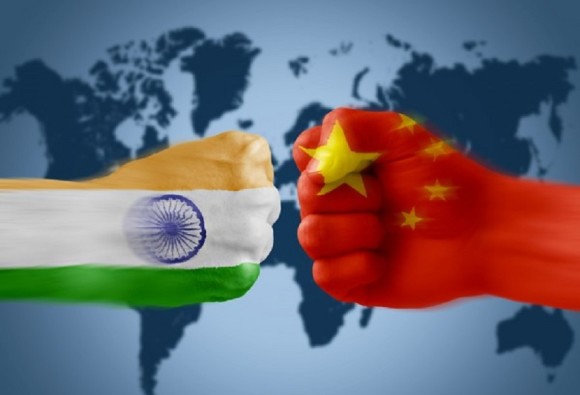Technology Law / Cyber Law
India-China: Beyond the Line

Lacking Capacity building
When China was busy becoming the global manufacturing hub, India did little to address its own demand. India has taken a two-prong approach to deal with the aftermath of banning Chinese imports. First, to look for alternate sources and second, to become self-reliant. Where the first one has little to no scope of being useful in the short run, the latter can only be executed in the long run, if the former becomes a success first.
Even if India successfully bans furnished products from China the reliance on intermediary goods is difficult to tame. According to Consumer Electronics and Appliances Manufacturers Association (CEAMA), 25-70 % of components for the Indian industry are shipped from China, reliance on which cannot be reduced overnight.[15]
It’s a known fact that production is costlier in India as compared to China. This is mainly due to higher labor costs, power, and transportation costs.[16] To convince companies to shift production to India at a higher cost doesn’t sound logically possible, without introducing relevant policies and incentives to promote our cause. According to Acuite, the existing manufacturing units can only substitute for 25% of all imports from China. For instance, in 2020 India imported $431 million worth handicrafts from China without any reciprocal exports.[17] Presently India lacks the capacity to transition into a self-reliant economy overnight. Such transition although not impossible can’t happen at such a fast rate.
Boycotting not a solution in the Short-run
India’s move for becoming ‘Atmanirbhar’ can be a long-term goal but it definitely can’t be kickstarted by banning Chinese products. In the short run, this is undeniably a self-destructive step. With market stakes so high India should rather focus on defeating its Chinese counterpart in its own game by becoming better and by introducing policies, which can lure investors and companies to invest and bring in production to our country.
What the Chinese have accomplished in terms of manufacturing was not an outcome of them closing their doors for European or American products. Rather it was a strategic move of learning their technology and making it better and cheaper through indigenous innovations.
For India to ban products, especially raw materials from China that form the backbone of Sino-India bilateral trade would require a mandate with a 5 to 7-year goal to build the Indian industry to that extent. In short, boycotting in the short run without a developed R&D and manufacturing ecosystem would only end up hurting the Indian economy.
Every step has to be calculated in the backdrop of an ongoing pandemic that has worsened the economic position of India over the months. The loss of employment that this step will cause is unprecedented in the absence of a clear backup plan.
Conclusion
The outcome that India seeks with banning Chinese imports might never happen as India accounts for only 3% of China’s exports. Such a step won’t harm them, however, the Chinese money that has seeped into the socio-economic structure of the Indian market, if shaken up, can definitely crumble the Indian economy.
The behemoth task of finding alternatives that can substitute for Chinese imports requires a duration of at least 2-3 years. As these alternatives should not only look efficient prima-facie but also play out the role played by Chinese imports for all these years effectively.
India clearly lacks a blueprint to make this transition, especially during an economic downturn. Steps like banning Chinese apps might build momentary pressure on the Chinese companies but the same cannot be done with essential items.
Building capacity to reduce Chinese influence through the role-play of market forces seems to be the only logical solution which again is a long term goal. Hence, in the absence of strong alternatives, India should avoid banning Chinese imports in order to prevent the economy from going into a downward spiral when it is already on the verge of a meltdown.
[1] James Crabtree, Why A Trade War with China Is A Bad Idea for India, Foreignpolicy, June 29, 2020 available at https://foreignpolicy.com/2020/06/29/trade-war-china-bad-idea-india-border-skirmish-boycott/
[2] How Dependent Is India On China Revealed By Trade Data, Money Control, June 3 2020 available at [3] id. [4] Over Half Of Electronic Imports From China, Business Standard , April 27, 2016 available at https://www.business-standard.com/article/pti-stories/over-half-of-electronic-imports-from-china-116042700819_1.html [5] Id. [6] Afra Javaid, Boycotting Chinese Products: Is It Really Possible For India, Jagran josh, June 2, 2020, available at https://www.jagranjosh.com/general-knowledge/boycott-chinese-products-1591083471-1 [7] Xiaomi:The Chinese brand dominating the Indian smartphone market, BBC News, October 22, 2019 available at https://www.bbc.com/news/world-asia-india-50135050 [8] Kiran Rathee, Curbs on imports hits Chinese smartphone production in India; units might halt work in a few days, Financial Express, July 1, 2020 available at https://www.financialexpress.com/industry/curbs-on-imports-from-china-to-hit-smartphone-production/2009347/ [9] Id. [10] Rupali Mukherjee, China Supplies 80% pharma raw materials, Times of India, June 19, 2020 available at https://timesofindia.indiatimes.com/business/india-business/china-supplies-over-80-of-pharma-raw-materials/articleshow/76453541.cms [11] IPA Member Cos; Times of India available at https://timesofindia.indiatimes.com/business/india-business/china-supplies-over-80-of-pharma-raw-materials/articleshow/76453541.cms [12] Shakeel Anwar, List of Chinese funded companies in India, Jagran Josh, June 18,2020 available at https://www.jagranjosh.com/general-knowledge/list-of-chinese-funded-companies-in-india-1500032596-1 [13] P Vaidyanathan Iyer & Anil Sasi, Chinese stake in Indian tech,Indian Express,June 19,2020 available at: https://indianexpress.com/article/india/india-china-galwan-army-faceoff-chinese-stakes-in-indian-tech-6462399 [14] Id. [15] Dependence On China Not To Go Down Soon, Economic Times ,June 29 ,2020 available at, https://economictimes.indiatimes.com/industry/cons-products/electronics/95-appliances-now-made-in-india-dependence-on-china-for-components-not-to-go-down-soon-ceama/articleshow/76688591.cms?utm_source=contentofinterest&utm_medium=text&utm_campaign=cppst [16] Quora, Why Manufacturing Is More Expensive In India, Forbes, Dec 17 ,2017 available at https://www.forbes.com/sites/quora/2017/12/13/why-is-manufacturing-more-expensive-in-india-than-in-china/#207b7b6b6301 [17] Supra note (7).



